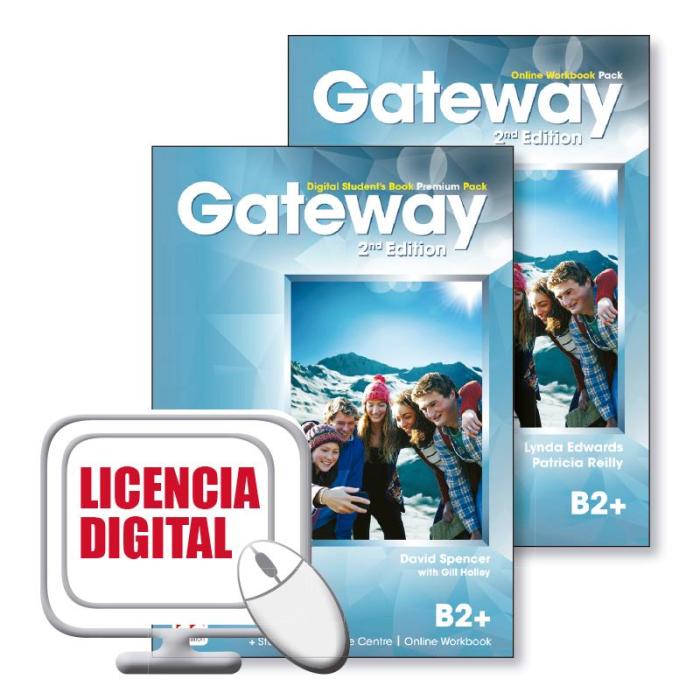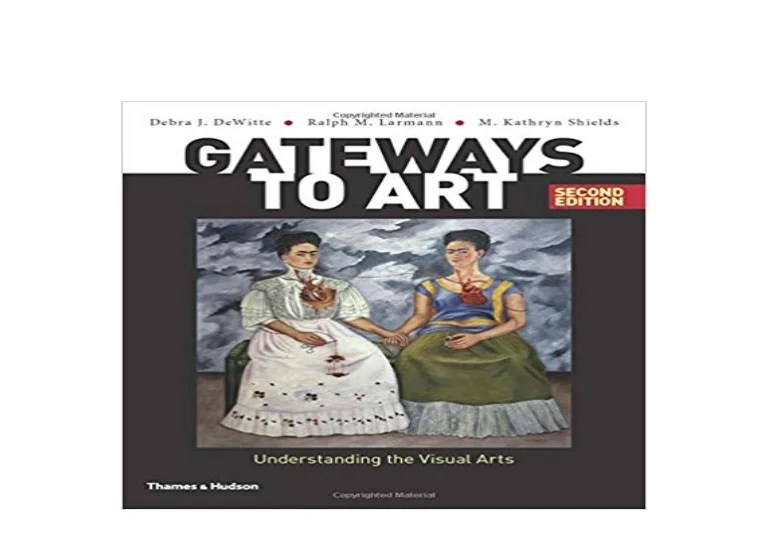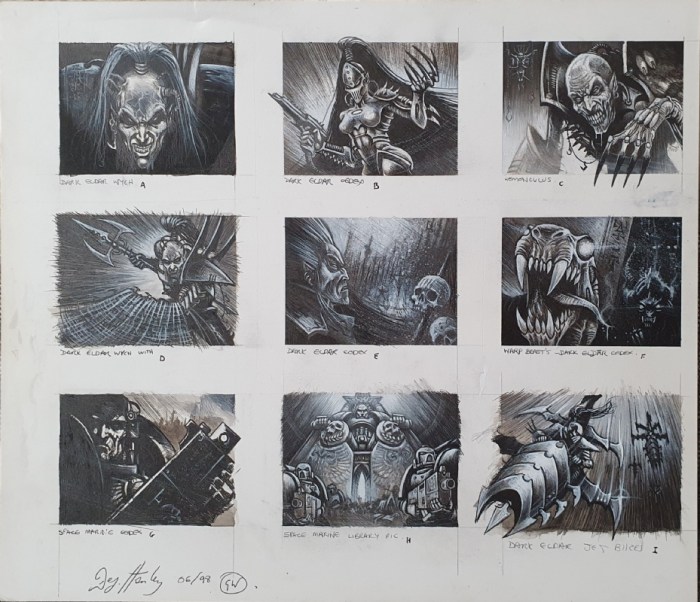Gateway to art 3rd edition – Gateway to Art, 3rd Edition embarks on an artistic odyssey, inviting readers to explore the boundless realms of art history, theory, and practice. This comprehensive guidebook unveils the secrets of artistic perception, creativity, and criticism, empowering aspiring artists and art enthusiasts alike.
Delving into the depths of art history and appreciation, Gateway to Art, 3rd Edition illuminates the evolution of artistic styles, movements, and masterpieces. Through captivating examples and insightful analysis, it fosters a deep understanding of diverse art forms and periods, nurturing an appreciation for the artistic heritage that shapes our world.
Introduction
Gateway to Art, 3rd Edition, is a comprehensive and engaging textbook designed to introduce students to the fundamentals of art history, theory, and practice.
The book is structured into four parts:
- Part 1: Foundations of Artintroduces the basic concepts of art, including the elements of art, principles of design, and the different types of art.
- Part 2: Art Historyprovides a chronological overview of art history, from prehistoric times to the present day.
- Part 3: Art Theoryexplores the different theories and approaches to understanding art, including formalism, iconography, and postmodernism.
- Part 4: Art Practiceoffers practical advice on how to create art, including tips on drawing, painting, sculpture, and photography.
Key Concepts and Theories
Gateway to Art, 3rd Edition delves into the foundational concepts and theories that underpin the understanding and appreciation of art. These concepts and theories provide a framework for analyzing, interpreting, and evaluating artistic works, shaping our perceptions of art and its significance.
The book explores the historical and contemporary influences that have shaped these concepts and theories, tracing their evolution and impact on the art world. By understanding these key ideas, readers gain a deeper comprehension of the creative process, the nature of artistic expression, and the critical tools necessary for engaging with art on an informed level.
Artistic Perception
Artistic perception encompasses the ways in which we perceive, interpret, and experience art. It involves both cognitive and emotional processes, influenced by our individual experiences, cultural background, and cognitive biases. The book examines various theories of perception, such as Gestalt psychology and semiotics, to provide insights into how we make sense of visual information and derive meaning from artistic works.
Creativity
Creativity is central to the artistic process, involving the generation of original and meaningful ideas. Gateway to Art explores different perspectives on creativity, including its cognitive, psychological, and social dimensions. The book discusses theories such as divergent thinking and problem-solving, as well as the role of inspiration, imagination, and intuition in the creative process.
Art Criticism
Art criticism is a systematic and analytical approach to evaluating and interpreting art. It involves applying critical criteria to assess the aesthetic, technical, and conceptual qualities of an artwork. The book introduces different schools of art criticism, such as formalism, Marxism, and feminism, and discusses their methodologies and contributions to the understanding of art.
Art History and Appreciation

The third edition of “Gateway to Art” emphasizes the significance of art history and appreciation. The book provides a comprehensive overview of the subject, covering diverse art forms and historical periods.
Understanding Art Forms and Periods
The book guides students in comprehending the characteristics and techniques of various art forms, including painting, sculpture, architecture, photography, and digital art. It presents examples from different cultures and eras, allowing students to grasp the evolution and impact of art across time.
Analyzing Artworks
The book equips students with analytical tools to critically examine artworks. It introduces concepts such as composition, color theory, and iconography, enabling students to decipher the meanings and messages conveyed through art. By studying specific examples, students learn to identify artistic styles, interpret symbolism, and appreciate the nuances of different artworks.
Art-Making Activities and Projects: Gateway To Art 3rd Edition
The third edition of Gateway to Art offers a diverse range of art-making activities and projects designed to foster creativity, skill development, and artistic expression. These activities encourage students to explore various art forms, techniques, and materials, enabling them to develop their artistic abilities and cultivate a deeper appreciation for art.
Project-Based Learning
The book emphasizes project-based learning, which involves students actively engaging in hands-on art projects. These projects provide a structured framework for students to apply their knowledge and skills, experiment with different materials and techniques, and develop their own unique artistic vision.
By working on projects, students gain practical experience, develop problem-solving abilities, and enhance their critical thinking skills.
Exploration of Art Forms
The art-making activities and projects cover a wide range of art forms, including drawing, painting, sculpture, ceramics, printmaking, and digital art. This exposure to diverse art forms allows students to explore their interests, discover new techniques, and develop a well-rounded understanding of the artistic process.
Each project is carefully designed to introduce specific art concepts and techniques, guiding students through the steps involved in creating their own artworks.
Skill Development, Gateway to art 3rd edition
Through these activities and projects, students develop essential art-making skills, such as observation, composition, color theory, and perspective. They learn how to use different tools and materials effectively, experimenting with various techniques to create expressive and meaningful artworks. The projects also encourage students to develop their imagination and creativity, fostering their ability to generate original ideas and express themselves through art.
Artistic Expression
The art-making activities and projects in Gateway to Art provide students with a platform for artistic expression. By engaging in these projects, students can explore their own artistic interests, develop their unique styles, and communicate their ideas and emotions through their artworks.
The projects encourage students to reflect on their own experiences, observations, and feelings, fostering a deeper connection to the artistic process and the world around them.
Pedagogical Approaches
The third edition of Gateway to Art employs a comprehensive range of pedagogical approaches to facilitate student learning and engagement.
The book integrates differentiated instruction to cater to the diverse needs and learning styles of students. It provides a variety of learning activities, assessments, and resources that allow teachers to adapt the content and delivery methods to suit individual student abilities and preferences.
Student Engagement
Gateway to Art actively engages students through interactive and hands-on learning experiences. It incorporates a range of activities, such as art-making projects, group discussions, and digital resources, to keep students motivated and involved in the learning process.
- Art-making projects allow students to apply their understanding of art concepts and techniques through practical experiences.
- Group discussions encourage students to share their perspectives, collaborate with peers, and develop critical thinking skills.
- Digital resources, such as videos, simulations, and interactive exercises, provide engaging and interactive learning experiences that supplement traditional classroom instruction.
Assessment
The book provides a variety of assessment tools to evaluate student learning and provide feedback. These assessments include:
- Formative assessments, such as quizzes, discussion questions, and self-reflections, provide opportunities for students to assess their own understanding and identify areas for improvement.
- Summative assessments, such as tests, projects, and portfolios, evaluate student learning at the end of a unit or course and provide a more comprehensive measure of their progress.
- Authentic assessments, such as student presentations, exhibitions, and performances, allow students to demonstrate their learning in real-world contexts and showcase their creativity.
Assessment and Evaluation

Gateway to Art 3rd Edition offers a range of assessment and evaluation strategies to support student learning. These strategies allow students to monitor their progress, identify areas for improvement, and develop their artistic abilities.
Gateway to Art 3rd Edition is a comprehensive guide to art history and theory. It is an excellent resource for students, teachers, and anyone interested in learning more about art. The book is well-written and well-organized, and it is packed with information and illustrations.
One of the things that I particularly like about this book is that it includes a wide range of artists, from well-known masters to lesser-known figures. For example, puedo ir al bano sr wooly is a fascinating artist who is not as well-known as some of the other artists in the book, but whose work is just as interesting and important.
I highly recommend Gateway to Art 3rd Edition to anyone who is interested in learning more about art.
The book emphasizes formative assessment, which is an ongoing process that provides feedback to students during the learning process. This type of assessment can include observations, checklists, self-reflections, and peer critiques. By receiving regular feedback, students can adjust their work and improve their skills.
Assessment Strategies
- Observations:Teachers can observe students during art-making activities to assess their engagement, effort, and progress.
- Checklists:Checklists can be used to track specific skills or criteria, such as composition, color theory, or drawing techniques.
- Self-reflections:Students can reflect on their own work and identify areas for improvement, fostering self-awareness and critical thinking.
- Peer critiques:Students can provide feedback to each other, developing their ability to evaluate and articulate artistic concepts.
Evaluation Strategies
In addition to formative assessment, the book also suggests summative evaluation strategies, which are used to assess student learning at the end of a unit or course. These strategies can include:
- Art portfolios:Students can compile a portfolio of their best work, showcasing their progress and demonstrating their artistic abilities.
- Performance tasks:Students can create original works of art or perform art-related tasks to demonstrate their understanding and application of concepts.
- Written assessments:Students can write essays, reports, or artist statements to reflect on their artistic experiences and demonstrate their knowledge of art history and theory.
By combining formative and summative assessment and evaluation strategies, Gateway to Art 3rd Edition provides a comprehensive approach to assessing student learning in art education.
Technological Integration
The third edition of Gateway to Art seamlessly integrates technology into art education, recognizing its transformative power in enhancing learning experiences and fostering student creativity.
Technology plays a pivotal role in bridging the gap between traditional art-making techniques and contemporary digital art practices. It provides students with access to a vast array of tools, resources, and platforms that expand their artistic horizons and encourage experimentation.
Digital Tools and Resources
- Drawing and Painting Software:Students can explore digital drawing and painting techniques using software such as Adobe Photoshop, Procreate, and Corel Painter, experimenting with a wide range of brushes, textures, and color palettes.
- 3D Modeling and Animation:Technology empowers students to create and manipulate 3D models, bringing their ideas to life through animation and interactive simulations.
- Online Galleries and Museums:Virtual tours and online exhibitions allow students to access a wealth of artworks from around the world, broadening their understanding of art history and different cultures.
Enhancing Learning Experiences
Technology enhances learning experiences by providing:
- Personalized Learning:Digital platforms offer individualized learning experiences tailored to each student’s pace and interests.
- Interactive Simulations:Simulations and virtual environments allow students to experiment with art concepts and techniques in a safe and engaging way.
li> Collaborative Projects:Technology facilitates collaboration between students, enabling them to share ideas and work together on creative projects.
Supporting Student Creativity
Technology empowers student creativity by:
- Breaking Down Barriers:Digital tools remove traditional barriers to art-making, allowing students to experiment with different mediums and styles without the need for specialized materials.
- Encouraging Innovation:Technology fosters innovation by providing students with access to cutting-edge tools and techniques that inspire new ideas and approaches.
- Developing Critical Thinking:The use of technology encourages students to critically evaluate their own work and the work of others, developing their aesthetic judgment and problem-solving skills.
Cross-Curricular Connections

Gateway to Art, 3rd Edition, emphasizes the interconnectedness of art with various other academic disciplines. It fosters a comprehensive understanding of the arts by integrating them with subjects like history, literature, and science.
The book’s cross-curricular approach encourages students to explore the interplay between different fields of knowledge, enhancing their critical thinking skills and broadening their perspectives.
History
- Students engage with historical events and figures through the analysis of artworks from different periods, understanding how art reflects and shapes societal values.
- Artworks are used as primary sources to study historical events, providing insights into the cultural and political contexts of the time.
Literature
- Students draw connections between literary works and visual art, exploring how artists and writers respond to similar themes and ideas.
- Artworks are used as inspiration for creative writing assignments, encouraging students to express their understanding of literature through artistic expression.
Science
- Students investigate the scientific principles underlying artistic techniques and materials, fostering an appreciation for the interplay between art and science.
- Artworks are used as examples to demonstrate scientific concepts, such as color theory, perspective, and proportion.
Impact and Influence
Gateway to Art, 3rd Edition, has made a significant impact on art education, shaping teaching practices and student learning.
The book’s comprehensive approach to art education, encompassing art history, appreciation, art-making activities, and pedagogical approaches, has provided educators with a valuable resource for engaging students in the subject.
Teaching Practices
The book’s emphasis on hands-on art-making activities has encouraged teachers to incorporate more practical experiences into their lessons, fostering students’ creativity and artistic skills.
Additionally, the book’s pedagogical approaches have guided teachers in developing effective lesson plans that cater to diverse learning styles and meet curriculum standards.
Student Learning
Students have benefited from the book’s engaging and accessible content, which has fostered their appreciation for art and developed their critical thinking skills.
The book’s focus on art history and art appreciation has helped students understand the historical and cultural context of art, enriching their understanding of the subject.
FAQ Summary
What is the significance of Gateway to Art, 3rd Edition in art education?
Gateway to Art, 3rd Edition serves as a comprehensive resource for art educators, providing a structured and engaging approach to teaching art history, theory, and practice. Its pedagogical strategies promote differentiated learning, fostering inclusivity and catering to diverse learning styles.
How does Gateway to Art, 3rd Edition integrate technology into art education?
Gateway to Art, 3rd Edition seamlessly integrates technology into the art education experience, leveraging digital tools and resources to enhance learning. It introduces students to cutting-edge technologies used in contemporary art practices, fostering creativity and innovation.
What cross-curricular connections does Gateway to Art, 3rd Edition establish?
Gateway to Art, 3rd Edition recognizes the interconnectedness of art with other disciplines, establishing cross-curricular connections with subjects such as history, literature, and science. By exploring the interplay between art and these fields, it broadens students’ perspectives and deepens their understanding of the world.